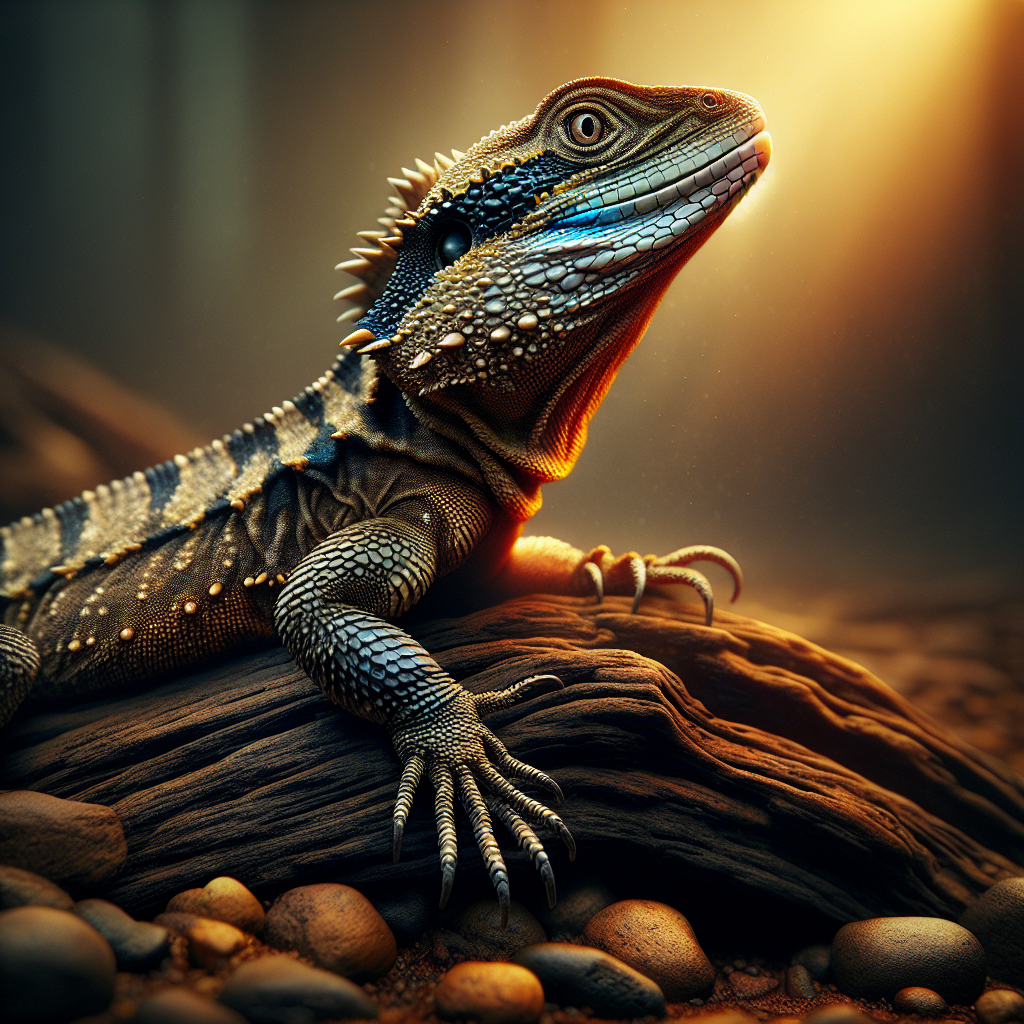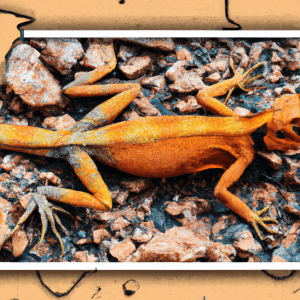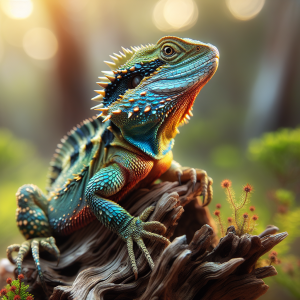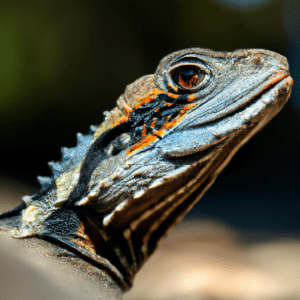Introduction: Iconic Lizard Species of Australia
Have you ever stopped to marvel at the fascinating world of Australian lizards? These unique creatures are not only iconic but also hold a special place in the diverse ecosystem of the Land Down Under. Picture this – a scorching sun beating down on the red desert sands as a bearded dragon basks lazily, showcasing its intricate patterns and colors. That’s just a glimpse of the captivating world of iconic lizard species in Australia.
Let’s delve deeper into the realm of Australian lizards. These reptiles come in all shapes and sizes, from the tiny geckos to the mighty goannas. Each species has its own set of distinct characteristics that make them stand out in the vast wilderness of Australia. Did you know that the frilled dragon is known for its unique defensive display of extending a colorful frill around its neck when threatened? It’s like having a built-in superhero cape!
One interesting fact about Australian lizards is their incredible adaptability to diverse habitats. From the lush rainforests to the arid outback, these reptiles have found ways to thrive in various environments. However, this adaptability also poses a challenge in terms of conservation efforts. With increasing urbanization and habitat loss, preserving the natural habitats of these iconic lizard species becomes crucial for their survival.
If you ever find yourself in Australia, keep an eye out for these fascinating creatures. Whether you’re exploring the coastal regions of Queensland or trekking through the rugged landscapes of the Northern Territory, there’s a good chance you’ll encounter some of these iconic lizard species along the way. Remember to observe them from a distance and respect their natural habitat.
So, are you ready to embark on a reptilian adventure and discover the wonders of Australian lizards? Stay tuned as we uncover more about the diversity, behaviors, and conservation efforts surrounding these iconic creatures. Join me in celebrating the beauty and significance of Australia’s unique lizard species!
The Diversity of Australian Lizards
Have you ever thought about the incredible diversity of Australian lizards? It’s mind-blowing! From the vibrant colors of the frilled lizard to the spiky appearance of the thorny devil, these creatures are truly fascinating.
One interesting fact about Australian lizards is their adaptation to various habitats. Some species thrive in the arid deserts of the Outback, while others prefer the lush rainforests of the northeast. It’s amazing how these creatures have evolved to survive and thrive in such diverse environments.
I remember the first time I spotted a blue-tongued skink in my backyard. It was such a surprise to see this unique lizard basking in the sun, showing off its bright blue tongue. That experience sparked my interest in learning more about Australian lizards and their different species.
As we delve into the topic of the diversity of Australian lizards, it’s important to appreciate the significance of these creatures in the ecosystem. Lizards play a vital role in controlling insect populations and serving as prey for larger predators. Their presence is crucial for maintaining the balance of the natural world.
Exploring the habitats of Australian lizards can also lead us to discover the conservation challenges they face. With habitat destruction and climate change threatening their survival, it’s essential to raise awareness about the importance of protecting these iconic species.
So, next time you come across a lizard while exploring the Australian wilderness, take a moment to appreciate the beauty and complexity of these fascinating creatures. They may be small in size, but their impact on the ecosystem is truly remarkable.
Characteristics of Iconic Australian Lizard Species
When talking about the characteristics of iconic Australian lizard species, it’s fascinating to delve into the unique features that make them stand out in the reptile world. These lizards are truly remarkable creatures, each with its own set of distinctive traits that help them thrive in the diverse landscapes of Australia.
For instance, did you know that the frilled lizard, also known as the “frilled dragon,” has an extraordinary defense mechanism? When threatened, this lizard can spread out the skin around its neck like a frill, making itself appear larger and more intimidating to potential predators. It’s like having a built-in superhero cape for protection!
Another interesting fact about Australian lizards is their incredible diversity in coloration and patterns. From the vivid blue tongues of the blue-tongued skink to the vibrant scales of the green tree monitor, these lizards showcase a stunning array of hues that blend seamlessly with their natural surroundings. It’s like a living rainbow moving through the Australian bush!
Exploring the characteristics of iconic Australian lizard species not only offers insight into their physical attributes but also sheds light on their adaptations for survival. These lizards have evolved over time to thrive in various environments, whether it’s the arid deserts of the Outback or the lush rainforests of Queensland. Understanding these unique features can deepen our appreciation for the intricate beauty of Australia’s reptilian inhabitants.
So, next time you encounter an Australian lizard, take a moment to observe its characteristics closely. Notice the intricate details of its scales, the agility in its movements, and the way it interacts with its surroundings. By appreciating the remarkable traits of these iconic lizard species, we can gain a greater understanding of the natural world and the importance of preserving these fascinating creatures for future generations to enjoy.
Habitats of Australian Lizards
Have you ever stopped to think about the diverse habitats that Australian lizards call home? It’s truly fascinating to consider how these creatures have adapted to thrive in various environments across the continent. From the arid deserts of the Outback to the lush rainforests of the East Coast, Australian lizards have carved out unique niches for themselves.
One interesting fact about the habitats of Australian lizards is that certain species have evolved specific adaptations to suit their surroundings. For example, the Thorny Devil, a well-known lizard species in Australia, is perfectly suited to the harsh desert environment. Its spiky skin not only provides protection from predators but also helps in collecting dew from the air, allowing it to survive in arid conditions where water is scarce.
Understanding the habitats of Australian lizards is crucial for their conservation. As human activities continue to impact natural environments, it’s essential to protect the diverse habitats that these iconic species rely on. Conservation efforts often focus on preserving and restoring key habitats, ensuring that Australian lizards have a sustainable future in their native landscapes.
When you think about the habitats of Australian lizards, consider the delicate balance that exists between these creatures and their surroundings. Each habitat plays a vital role in supporting the unique biodiversity of Australia, making it essential to protect these ecosystems for future generations to enjoy.
Next time you spot a lizard basking in the sun or darting across the bush, take a moment to appreciate the incredible diversity of habitats that these iconic creatures call home. Their adaptability and resilience in the face of environmental challenges serve as a reminder of the interconnectedness of all living beings in the natural world.
Interesting Behaviors of Iconic Lizard Species
Have you ever seen how some lizards do push-ups? It’s not just for show – these little reptiles engage in this behavior for various reasons, and it’s quite fascinating to observe. When you come across an iconic Australian lizard species like the frilled lizard or the blue-tongued skink, pay attention to their behaviors, as they can offer insights into their unique characteristics and habits.
These push-ups are not the same as the ones we do at the gym; they serve different purposes in the lizard world. For some species, such as the frilled lizard, performing push-ups can be a display of aggression or a way to assert dominance. It’s like their way of saying, “Hey, I’m here, and I mean business!” On the other hand, some lizards do push-ups to regulate their body temperature or to communicate with other lizards in their vicinity.
Imagine walking through the Australian outback and suddenly spotting a bearded dragon doing push-ups on a rock – it’s like witnessing a mini fitness routine in the wild! These behaviors add an extra layer of intrigue to the already captivating world of Australian lizards. Observing these actions can provide valuable insights into their social dynamics, communication methods, and survival strategies in their natural habitats.
Next time you’re out exploring the Australian bush, keep an eye out for these quirky push-up performances by iconic lizard species. It’s a reminder that every creature, no matter how small, has its own unique way of interacting with the world around them. So, take a moment to appreciate the complexity and beauty of nature’s creations, even in something as simple as a lizard doing push-ups on a sunny rock.
Conservation Efforts for Australian Lizards
Conservation efforts for Australian lizards are crucial to ensure the survival of these unique reptiles. Picture this: you’re hiking through the Australian outback, soaking in the breathtaking scenery, and suddenly, you spot a magnificent frilled lizard perched on a tree branch. It’s a moment of pure wonder and awe, but did you know that these iconic lizard species face numerous threats to their existence?
When it comes to conservation efforts for Australian lizards, there’s a delicate balance between preserving their natural habitats and mitigating human-induced impacts. One interesting fact is that habitat loss, climate change, invasive species, and illegal wildlife trade are some of the major challenges that Australian lizard species are up against. These factors have led to a decline in populations and put many species at risk of extinction.
As we delve deeper into the world of Australian lizard conservation, it’s essential to explore the various initiatives and strategies in place to protect these remarkable creatures. From designated conservation areas to public awareness campaigns, there’s a concerted effort to safeguard the habitats and populations of iconic lizard species across Australia. The question arises: How can we, as responsible individuals, contribute to these conservation efforts and make a positive impact on the future of Australian lizards?
One practical tip is to support organizations and initiatives that focus on lizard conservation, whether through donations, volunteering, or spreading awareness. Every little effort counts in preserving the rich biodiversity of Australia and ensuring that future generations can continue to marvel at the beauty of iconic lizard species. So, let’s all join hands in protecting these fascinating reptiles and their habitats for the generations to come.
Top Places to Spot Iconic Australian Lizard Species
Imagine we’re out exploring the Australian Outback together, searching for the most iconic lizard species that call this vast landscape home. I can’t wait to share with you the top places where we can spot these fascinating creatures in their natural habitats.
As we venture into the rugged terrain, we’ll be on the lookout for the renowned frilled lizard, also known as the “frilly.” Did you know that these lizards are famous for their unique defense mechanism of extending a large frill around their neck when threatened? It’s like having a built-in superhero cape!
Now, picture us trekking through the remote regions of Western Australia, where we might encounter the elusive thorny devil. This peculiar lizard is covered in spines and has a remarkable ability to collect water through capillary action from its skin. I’ll make sure we keep our eyes peeled for this master of survival in the arid desert landscape.
Our adventure wouldn’t be complete without a visit to the lush rainforests of Queensland to catch a glimpse of the vibrant blue-tongued skink. These friendly lizards are known for their striking blue tongues and their laid-back demeanor. We might even get lucky and witness their comical “blue-tongue bluff” display to deter predators.
As we continue our journey, I’ll share insider tips on how to observe these iconic Australian lizard species without disturbing their natural behaviors. Remember, patience is key when observing wildlife in their habitats, so let’s take our time and enjoy the unique sights and sounds of the Outback.
So, grab your binoculars and get ready for an unforgettable experience as we embark on a lizard-spotting adventure like no other. Let’s dive into the diverse world of Australian lizards and marvel at the beauty and wonder of these iconic reptiles that call this land down under their home.
Tips for Observing Lizards in the Wild
Have you ever tried observing lizards in the wild? It can be quite a thrilling experience, but it’s essential to approach it with care and respect for these fascinating creatures. When venturing out to spot Australian lizards, remember to tread lightly and keep your distance to avoid causing any stress to them.
One practical tip that I’ve found helpful is to be patient and observant. Lizards are incredibly agile and can quickly scurry away if they feel threatened. Find a comfortable spot to sit quietly and scan your surroundings for any signs of movement. Keep your eyes peeled for rustling leaves or quick flashes of color, as these could indicate the presence of a lizard nearby.
Another useful tip is to research the specific habitats and behaviors of the lizard species you’re hoping to observe. Different species have unique preferences when it comes to their environments, so knowing where and when to look can greatly increase your chances of a successful sighting. For example, some lizards are more active during certain times of the day or prefer specific types of vegetation for shelter.
Equipping yourself with a pair of binoculars can also enhance your lizard-watching experience, allowing you to observe these creatures from a safe distance without disturbing them. Binoculars can help you get a closer look at their intricate patterns and behaviors while maintaining a respectful distance.
Lastly, don’t forget to bring plenty of water, sunscreen, and insect repellent when venturing out into lizard territory. Australia’s diverse landscapes can be harsh, so it’s essential to stay hydrated and protected from the elements while you embark on your lizard-spotting adventure.
By following these practical tips and approaching lizard observation with a sense of curiosity and respect, you’ll be well on your way to enjoying the wonders of Australia’s iconic lizard species in their natural habitats. Happy exploring!
Fascinating Facts about Australian Lizards
Have you ever considered the incredible diversity and fascinating adaptations of Australian lizards? Let me share some fascinating facts that will surely pique your interest!
Australian lizards are renowned for their unique characteristics and behaviors. Did you know that the thorny devil, also known as the thorny dragon, has a remarkable defense mechanism? This iconic lizard species uses its spiky appearance to deter predators and can change its color to regulate its body temperature. Imagine encountering this master of camouflage in the Australian Outback!
When exploring the world of Australian lizards, one can’t help but marvel at the variety of species and their specialized habitats. From the agile blue-tongued skinks roaming through gardens to the majestic goannas patrolling the bushlands, each lizard plays a vital role in the ecosystem.
As we delve deeper into the realm of Australian lizards, it’s essential to appreciate the conservation efforts aimed at protecting these iconic species. With habitat loss and climate change posing significant threats, conservationists work tirelessly to safeguard the future of these unique reptiles. How can we balance human activities with the preservation of critical lizard habitats?
For those eager to witness these marvelous creatures in their natural environment, Australia offers a plethora of opportunities for lizard enthusiasts. Whether you’re exploring the rainforests of Queensland or venturing into the arid landscapes of the Northern Territory, keep your eyes peeled for sightings of the frilled lizard or the renowned bearded dragon.
As we uncover the wonders of Australian lizards, it becomes evident that these creatures not only captivate our imagination but also play a crucial role in maintaining ecological balance. Their adaptability, resilience, and beauty serve as a testament to the rich biodiversity found in the Land Down Under.
So, next time you venture into the Australian wilderness, take a moment to appreciate the intricate world of iconic lizard species that call this continent home. Who knows what fascinating encounter may await you on your reptilian adventure!
Embracing the Beauty of Australia’s Iconic Lizard Species
Imagine you’re explaining the fascinating world of Australian lizards to your friend. Well, let me tell you about this one incredible fact that will blow your mind – did you know that the thorny devil lizard can drink water through its skin? Yes, you heard it right! This unique lizard species has evolved a special way to survive in the arid Australian outback by absorbing water through tiny channels on its skin. Isn’t nature simply amazing?
Now, picture this – you’re out in the Australian wilderness, and suddenly you spot a thorny devil lizard making its way across the red sand. It’s a surreal experience to witness these creatures in their natural habitat. The intricate patterns on their skin, the way they move with such grace despite their spiky appearance – it’s like watching a living work of art.
But here’s the kicker – these iconic Australian lizards are facing threats due to habitat loss and climate change. As we marvel at their beauty and unique adaptations, we must also consider the importance of conservation efforts to protect these incredible species for future generations to admire and learn from.
So, the next time you find yourself exploring the wilds of Australia, keep an eye out for these iconic lizard species. Who knows, you might just stumble upon a frilled dragon displaying its impressive frill, or catch a glimpse of a blue-tongued skink basking in the sun. The world of Australian lizards is full of wonders waiting to be discovered – all you need to do is look closely and appreciate the marvels of nature that surround us.




